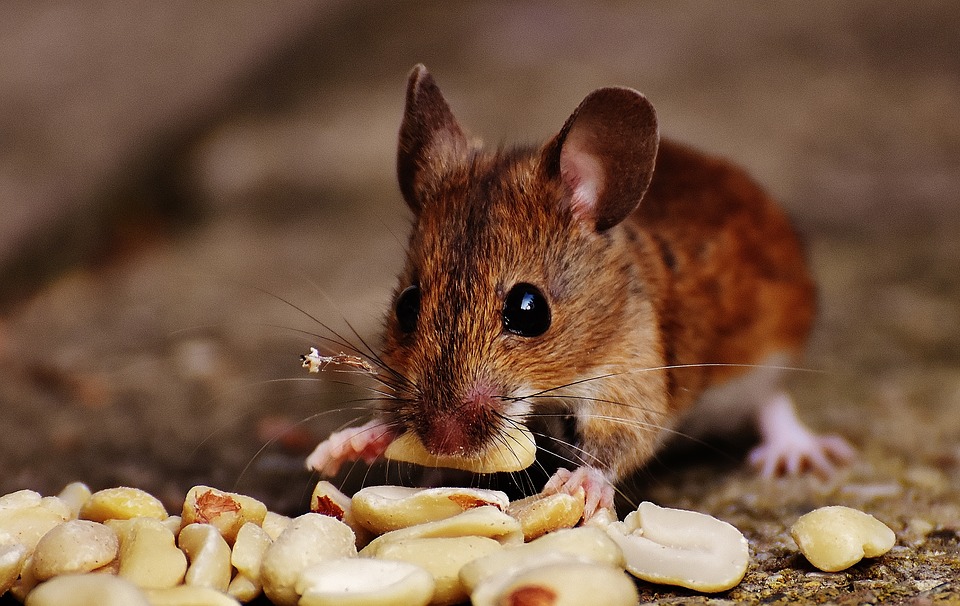Mice Pest Control
Clean, Fast, Discreet & Cost-effective

Mice are small mammals of the order Rodentia. Although commonly identified as pests, some are bred and kept as pets. Globally there are hundreds of types of mice including the Deer mouse (Peromyscus), Edible Dormouse (Glis glis), the Spiny mouse (Acomys) and even the Striped Zebra mouse (Lemniscomys). The House mouse (Mus musculus domesticus) and Field mouse or Wood mouse (Apodemus sylvaticus) are the two common types of mice found in the Ireland.
Why they can be dangerous
Mice can spread diseases such as Salmonella and Listeria, their urine, droppings and bedding causing infection. As mice travel, they are carrying dirt and bacteria with them, transferring it to counter tops, tables, cabinets etc. Mice use their urine to mark their territory, and due to their sporadic eating habits often build nests near food sources meaning that should you suffer an infestation you are at serious risk of food poisoning.
Mice can also cause a lot of property damage. Mice have front incisors that never stop growing, as a result that must constantly chew and gnaw to keep their teeth filed down. Electric cables, water and gas pipes, packaging and woodwork may all be seriously damaged by mice – many instances of electrical fires and floods have been attributed to them.
Where do mice come from?
Mice are naturally inquisitive and can squeeze through cracks as small as 5mm, to search for food and shelter. If a neighbouring property has an infestation, this can spread very quickly into your home or business. They can also come into your property by climbing vines or trellis against the walls of your building. If you have a lot of vegetation and foliage nearby this is perfect for mice to shelter in, until the time comes for them to find somewhere warmer.
WHY ARE MICE MORE COMMON IN AUTUMN?
Mice do not hibernate and are a problem all year round. House mice are already living in and around wherever we are. But as the weather gets colder, those field mice currently surviving outdoors will look for warmer places to nest and begin to move indoors.
How do you treat the problem?
Types of mice found in Ireland
HOUSE MOUSE (MUS MUSCULUS DOMESTICUS)
The House mouse is small, slender bodied, and the tail is longer than the length of its head and body. Its body size ranges from 2 1/2 to 3 4/5 inches long. Its body colour is generally greyish brown with a grey or buff belly. House mice is agile climbers and can fit through openings as small as ¼ inches in diameter. It eats many types of food but prefers seeds and grain. It normally travels an area averaging 10 to 30 ft. in diameters.
House mice are found in and around human structures as they rely on warmth and shelter for nesting sites, and our readily available food sources. Nests are often built-in places such as roof spaces, under floors or in wall cavities, sheds, basements, storage boxes and wherever there is access to a good source of food and safe, warm harbourage to breed
FIELD MOUSE OR WOOD MOUSE (APODEMUS SYLVATICUS)
These mice are known as “commensal rodents”, which refers to them living with or near humans. Commensalism is defined as a long-term interaction in which members of one species (i.e., mice) gain benefits, while those of the other species (i.e., humans) neither benefit nor are harmed. Field mice are much more suited to nesting outdoors but will possibly move indoors once the weather gets colder.
Outdoors, field mice will excavate burrows in which to build nests of dry grass, but they will also den among rocks and crevices. Their main priority will be building a nesting site that isn’t accessible to predators, including cats, foxes, birds and even other rodents, like rats.
Understanding mouse behaviour
Mice are similar to rats in many elements of their daily, seasonal and annual behaviour, living in family groups, feeding almost exclusively at night and actively seeking cover and concealment. They do, however, live almost exclusively inside, and are markedly more inquisitive than rats, actively investigating rather than avoiding new objects which does mean the right intervention can be quicker to yield results. Their lack of suspicion of new objects can increase the danger of contaminating stored produce with rodenticides, it allows far better use to be made of secure bait containers which seldom cause a neophobic reaction.
Mice are also erratic and sporadic feeders, moving rapidly between multiple different feeding points each night and only consuming small amounts of food at each. This strategy is every bit as effective as the rat’s neophobia in ensuring they do not consume significant quantities of any food until they consider it safe.Success in controlling mice with rodenticides depends more on the ability of the bait to keep the animal feeding than to overcome any initial wariness, with over 35 years in the field of pest control we have a wealth of knowledge and expertise to ensure your issues with mice on your property are dealt with as quickly and effectively as possible.
